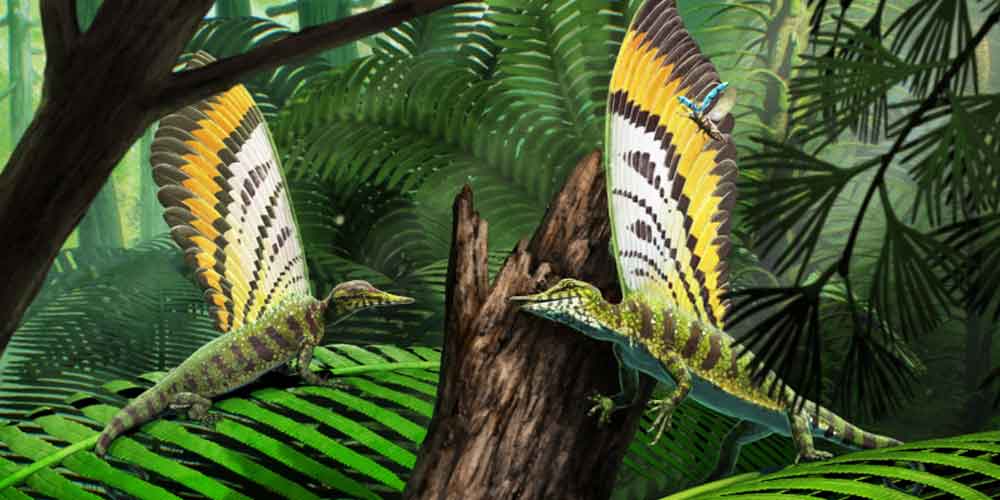A new species of fossil reptile that lived during the Triassic period has been discovered in southern France that researchers say had a large crest that was comprised of plume like structures rather than modern-type feathers.
A new species of fossil reptile that lived during the Triassic period has been discovered in southern France that researchers say had a large crest that was comprised of plume like structures rather than modern-type feathers. This discovery changes the view of the evolution of skin and feathers in reptiles, the researchers say. The study was led by scientists Dr. Stephan Spiekman and Prof. Dr. Rainer Schoch from the State Museum of Natural History Stuttgart, Germany and researchers hailed from France, Germany, Italy, the United States, and Ireland.
The species, Mirasaura grauvogeli, lived 247 million years ago and was discovered in France’s Grès à Voltzia locality. Rather than feathers, Mirasaura grauvogeli featured a plume of long outer protective layered structures. These integumentary structures have similar features to feathers, the researchers wrote in their paper, even though they existed 70 million years before fossil feathers appeared.
“We know that in modern animals, melanosome shape is closely linked to tissue type,” Dr Valentina Ross one of the researchers from the University College Cork. “We can therefore be confident that the Mirasaura structures share some common developmental features with feathers.”
The structures on the reptile lacked branching like that found on the feathers of modern birds. Instead, they had a simple, long medial feature that the researchers say superficially looks like the shafts of modern bird feathers.
Synchrotron-CT imaging showed that the reptile had a bird-like skull that was very delicate, a toothless snout, large eyes that faced forward and a high-domed skull. It also had grasping forelimbs. The research say these features point to a tree dwelling species that included a diet of insects and small prey items.s
The complete paper, “Triassic diapsid shows early diversification of skin appendages in reptiles” can be read on the Nature.com website.



